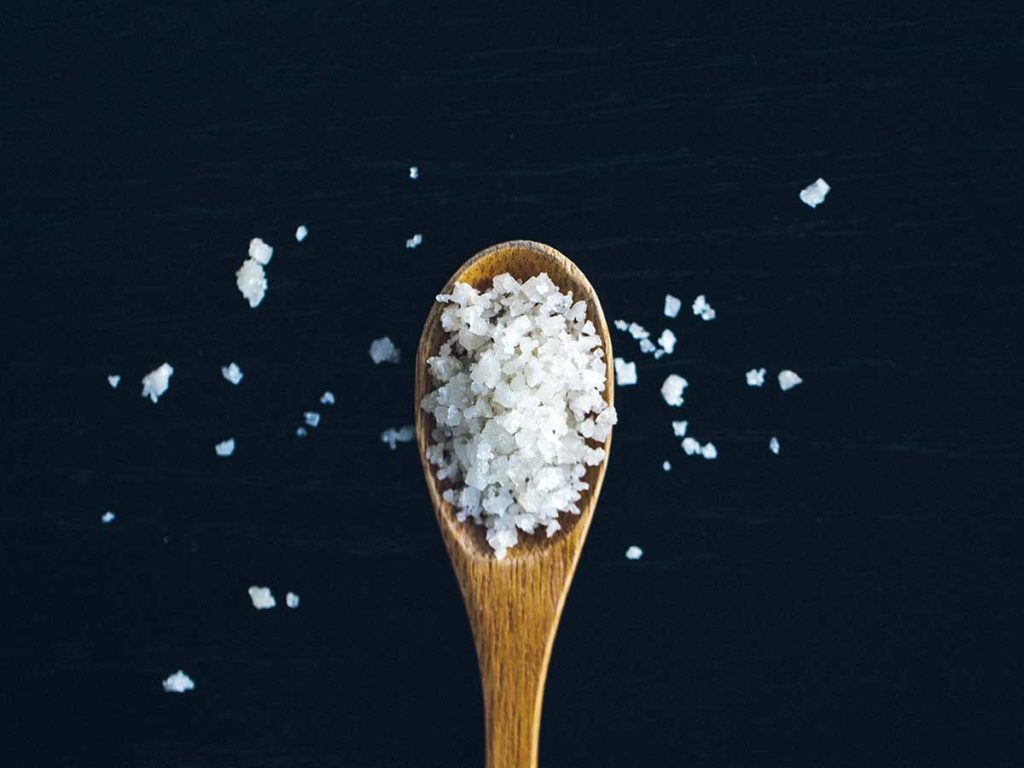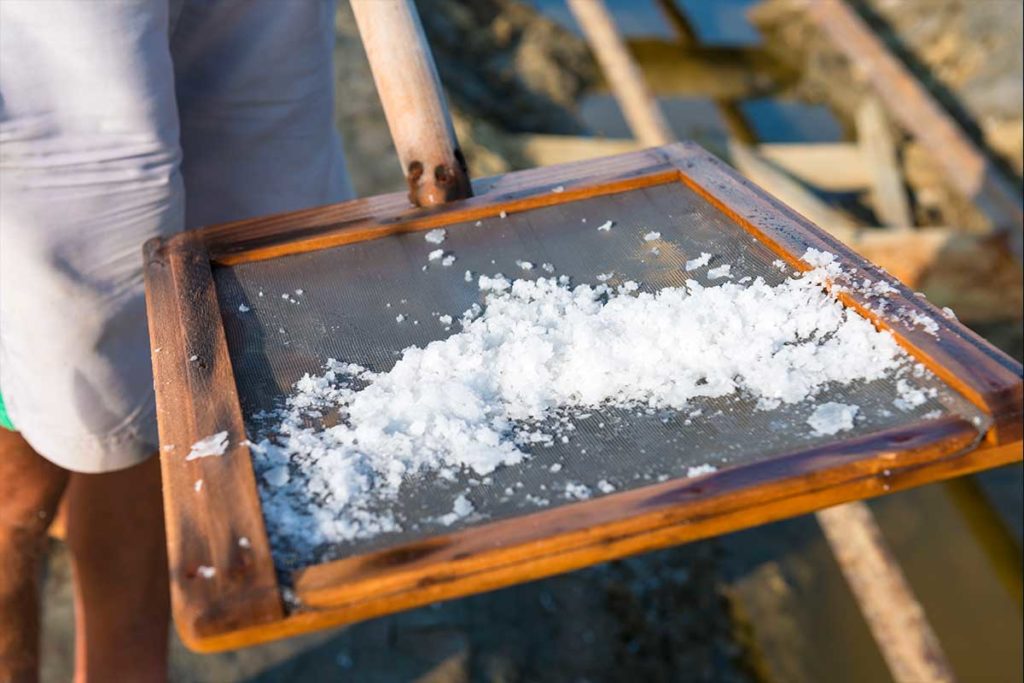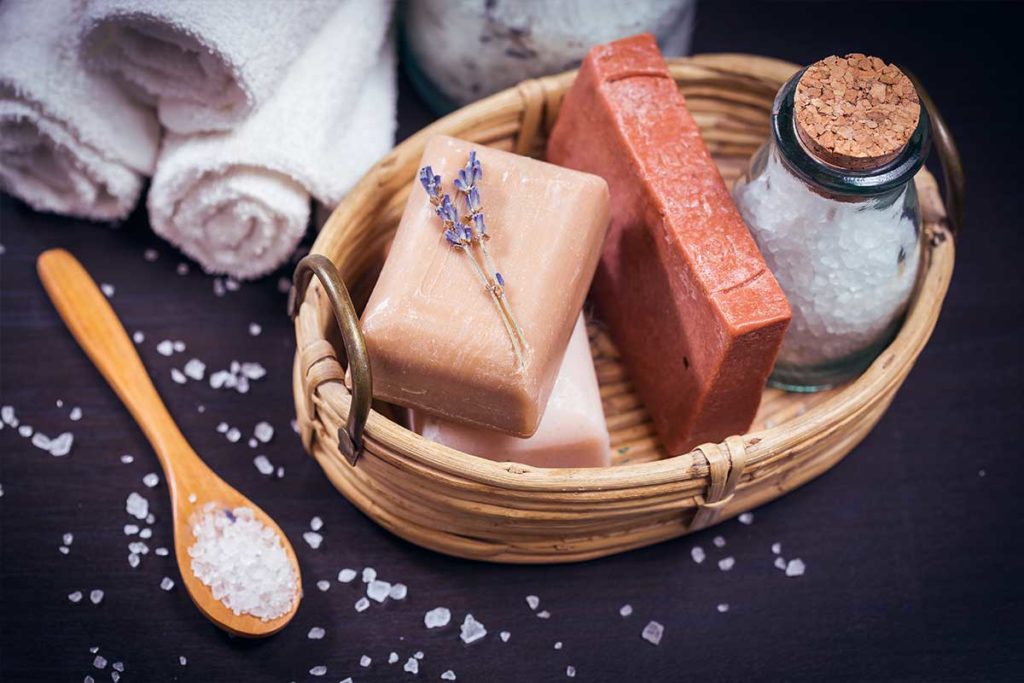Sea salt
Sea salt is not only considered the most natural and traditional form of table salt, sea salt extraction is also the oldest form of salt production. Find out more about August Töpfer & Co. here if you wish to buy high-quality sea salt. We are your contact for wholesale sea salt.

How does salt get into seawater?
Natural salts can be found in any form of water. The chemical compound sodium chloride even occurs in freshwater rivers and lakes in a scarcely perceptible quantity of 1.3 grams of salt per 1 litre of freshwater. Seawater contains around 35 grams of salt per litre and is not potable unlike freshwater.
But how does sea salt get into seawater? The answer is simple: from the earth. Rainfall releases salts from rock and washes them into rivers and the groundwater. The salts are thus transported by freshwater into the oceans, where salts can concentrate over millions of years and mix with volcanic and sedimentary salts, in contrast to rivers and lakes. As a result of geological displacement and sedimentation, the salt contained in the water gets trapped in the earth’s crust again, becoming rock salt, and the cycle starts anew. The salt content in the sea varies according to climatic conditions, exposure to radiation from the sun and evaporation. For instance, the salt content in the Baltic Sea is much lower than in subtropical regions or the Mediterranean Sea, where evaporation is higher than precipitation, allowing more salt to accumulate in the water.
What is sea salt?
Although the term sea salt suggests that sea salt only comes from seawater, we refer to all salt that comes from oceans, salt lakes or internal bodies of salty water as sea salt. Even rock salt that comes from salt mines is simply sea salt that has become trapped in the earth’s crust again through the process of sedimentation. Sea salt is therefore salt that is left behind after the evaporation of salt water on coasts and in artificial salt pans and is used for industrial processes and table salt production.
As a traditional wholesaler in the food and non-food sector, August Töpfer & Co. offers sea salt that meets the highest quality requirements. Whether you need only small quantities or bulk packs of sea salt in 25 kilogram units, we sell sea salt from our long-standing production partners. If you are also interested in Rock salt or Evaporated salt , simply take a look at our comprehensive salt range.

Sea salt – composition and properties
Many people consider sea salt to be a more natural salt for use in the kitchen. This is because, unlike table salt, it comprises only around 98 percent sodium chloride and therefore contains other important minerals and trace elements that are usually filtered out of table salt.
What’s more, sea salt often contains no artificial additives like anti-caking agents and is characterised by a milder taste. Its natural flavour properties and healthy contents make sea salt it a popular salt for cooking. Depending on the region the sea salt is extracted in, it can vary in grain size and colour. For instance, sea salt is available as coarse sea salt flakes – known as the expensive Fleur de Sel – or as fine grains that can scarcely be distinguished from normal table salt.
Sea salt – extraction and production
Sea salt accounts for 20 percent of global salt extraction. The main producers of sea salt are Spain, Portugal, France, Italy, China and Africa. In Germany, even with the Baltic Sea relatively low in salt, production of sea salt in an indoor saltwork began recently.
Sea salt is extracted using salt pans or seawater saltworks. These are artificial pools in which seawater or salty spring or lake water is stored to be evaporated by radiation from the sun as well as the wind.
The evaporation process increases the salt concentration in the water. Over time, a concentrated salt brine emerges which is then channelled into shallow basins. After further evaporation, only the salt remains which crystallises into layers of salt.
The sea salt is then harvested by machine or manually by salt panners and then stored for subsequent processing and distribution. The coarseness or fineness of sea salt depends on whether the sea salt is refined or not. Subsequent refinement processes determine whether and the extent to which the sea salt is washed, dried and sieved after being harvested.
Sea salt as table salt
The terms sea salt and table salt are not interchangeable. Table salt is mainly extracted from rock salt in mines and contains no other minerals or trace elements. Due to its contents, sea salt is popular for cooking primarily as a natural seasoning. At August Töpfer & Co., you are able to buy sea salt fine or as natural sea salt flakes. Since it has a milder taste compared to evaporated salt and contains additional trace elements, sea salt is suitable for anyone looking for a gentle, quality salt for refining dishes.
Fine sea salt
Fine sea salt for cooking – also known as Sel fin – does not differ from coarse-grained sea salt in terms of contents. It is produced with additional refinement steps after the crystallisation of salt brine in salt pans. Grinding, sieving and cleaning the coarse sea salt produces fine crystals that are naturally white and resemble table salt. Fine sea salt is available both with and without additives such as the trace elements iodine or fluoride.

Fleur de Sel – sea salt flakes
If you would like to buy coarse sea salt, you can order the most exquisite and highest-quality sea salt called Fleur de Sel from August Töpfer & Co. Fleur de Sel translates as “salt flower” and is only created on very hot, dry days through salt crystallisation on the surface of water. Salt producers skim off this fresh salt crust using hand tools and leave it untreated as pristine sea salt. The contents of the extracted sea salt flakes are 97 percent sodium chloride with additional chloride, potassium and magnesium. The recommended use of Fleur de Sel is as a condiment for unprocessed food or to season dishes.
Sel Gros – coarse sea salt
Sel Gros sea salt is unrefined, free from additives and consists of naturally grey salt crystals. The crystals grow on the bottom of salt pans during a slow evaporation process and are harvested by hand, dried and sold as untreated sea salt, just like Fleur de Sel. It is particularly suitable for traditional cuisine and for seasoning meat and grilled food.
Flos Salis – First Flush
If Fleur de Sel is the queen of salt, Flos Salis is the queen of queens. Flos Salis – also called First Flush – are the first crystals that form on the water’s surface in salt pans during the evaporation process. This special salt is shaped like flakes and is primarily used to season dishes and enhance flavour.
Sel Gris – grey sea salt
Grey sea salt, called Sel Gris, forms on the bottom of sea pans like coarse sea salt. It gets its grey colour from the clay and earth residues bound in the salt crystals. Sel Gris absorbs essential minerals from the subsurface while it crystallises under the Fleur de Sel salt layer and is traditionally harvested by hand 14 days after the Fleur de Sel. This grey sea salt is especially suitable for salting cooking water or as a topping and seasoning.
Applications of sea salt
Natural sea salt, untreated and without additives, is not only suitable for cooking but is also highly popular as a care product and bathing essence.
Sea salt as a bathing essence
For a revitalising and soothing salt bath, it is best to use coarse, untreated sea salt. The salt content of the water in a healthy salt bath is usually between one and six percent. Depending on the packaging instructions, one to two cups of sea salt are enough to bring about a healthy and relaxing effect. A salt bath mitigates inflammations, regulates the acid-alkali balance of the skin, reduces itching, soothes the skin and helps wounds heal faster. Moreover, it promotes circulation and skin rejuvenation.

Care products containing sea salt without additives
Besides bathing essences, there is a wide range of other care and cosmetic products based on sea salt. Salt peels and salt masks are among the most popular. Salt peels help skin regeneration and gently remove dead cells from rough patches of skin. These include special sea salt peels or untreated sea salt mixed with olive oil. The peeling product is applied to areas on the skin, massaged in and then removed again after a short time.
A salt mask works similarly. Here, one to two teaspoons are mixed with water and honey and applied to the face; the application is then washed off after around 10 to 15 minutes. Sea salt and honey have an anti-inflammatory effect and soothe the skin.
